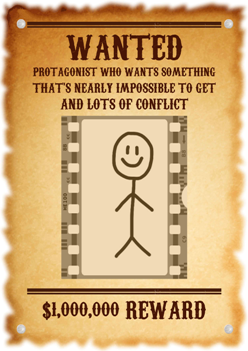QUESTION: What is “on the nose” dialogue?
ANSWER: When a character says exactly what he thinks or feels, writers refer to this as “on the nose” dialogue. Inexperienced writers tend to use this kind of dialogue exclusively. Skillful writers aim to use dialogue with subtext. Dialogue with subtext reveals a character’s thoughts in more subtle ways.
Most writers are familiar with Vito Corleone’s famous line from The Godfather: “I’m gonna make him an offer he can’t refuse.” Corleone says this line when Johnny Fontane (his godson) laments that a movie director, Mr. Woltz, won’t give him the lead role in a Hollywood movie. Suppose that instead of the famous “make him an offer he can’t refuse” line, Vito Corleone had said:
Perhaps if Woltz wakes up with the bloody head of his expensive horse next to him, he’ll change his mind!
The example above demonstrates “on the nose” dialogue. The line doesn’t leave anything to the imagination. Few people wouldn’t agree that the original line is better, because it doesn’t specify how the powerful Vito Corleone will deal with Woltz. The viewer can surmise that Mr. Woltz is in big trouble.
Is it ever reasonable to use “on the nose” dialogue? In truth, not every line needs to be filled with subtext. Recall this dialogue from the movie Taken that Bryan Mills says to Marko while preparing him for torture:
You know, we used to outsource this kind of thing. But what we found was the countries we outsourced to had unreliable power grids. Very Third World. You’d turn on a switch – power wouldn’t come on, and then tempers would get short. People would resort to pulling fingernails. Acid drips on bare skin. The whole exercise would become counterproductive. But here, the power’s stable. Here, there’s a nice even flow. Here, you can flip a switch and the power stays on all day.
In the dialogue above, Bryan doesn’t leave anything to the imagination about his experience in using torture to get information, but in this case, the dialogue works beautifully. Imagine if Bryan had said this instead:
I have ways of getting people to tell me what I want to know.
Doesn’t the original dialogue seem more effective at awakening a sense of dread? Writers must develop judgement about when and how to engage viewers/readers by weaving subtext into the dialogue to subtly reveal a character’s emotions (i.e. anger, jealousy, desire). Good writers avoid “on the nose” dialogue to state the obvious.
Until next time,
Write something you love! — Joanne
WriteSomethingYouLove.com






